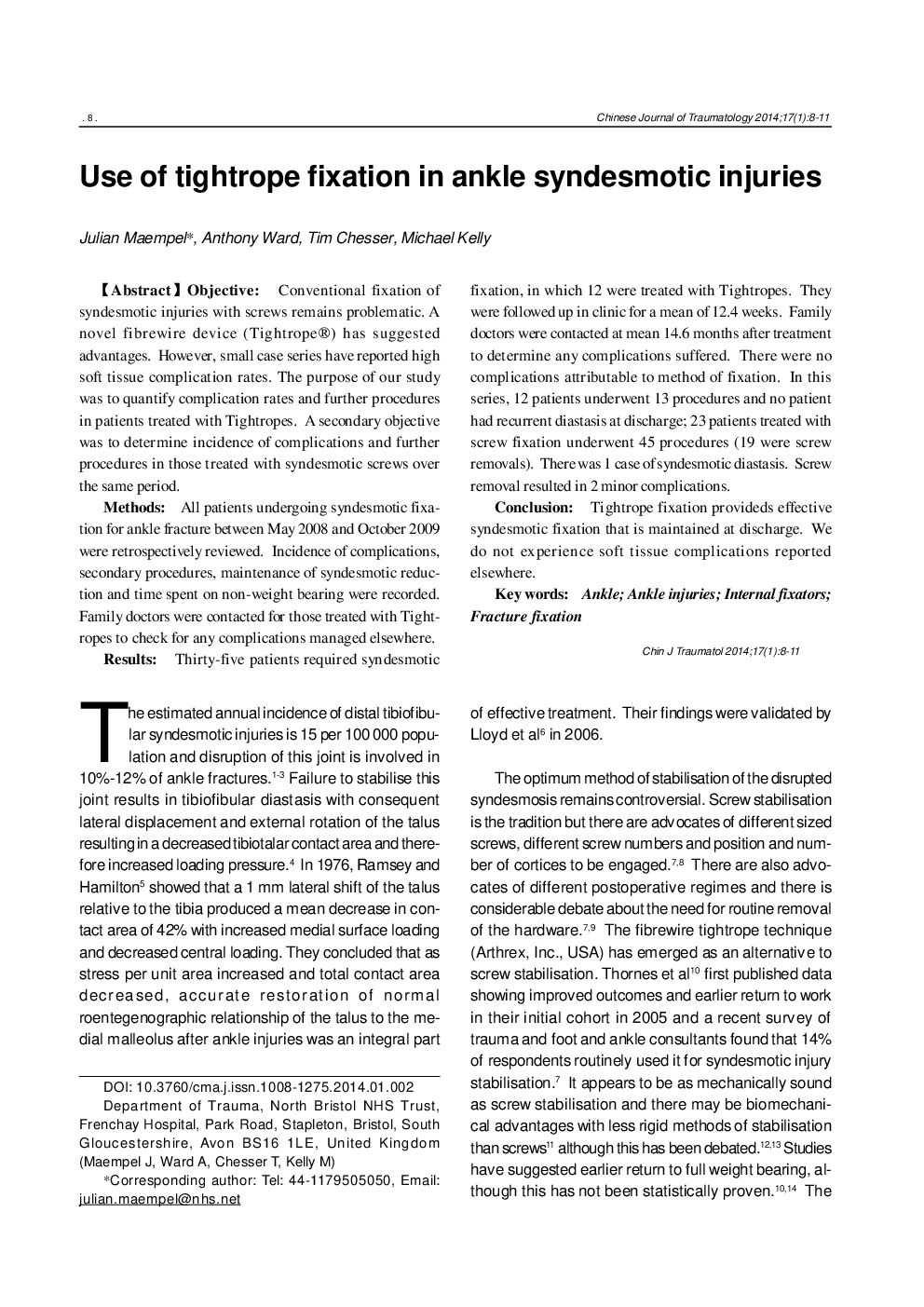| Article ID | Journal | Published Year | Pages | File Type |
|---|---|---|---|---|
| 3107327 | Chinese Journal of Traumatology | 2014 | 4 Pages |
[Abstract]ObjectiveConventional fixation of syndesmotic injuries with screws remains problematic. A novel fibrewire device (Tightrope®) has suggested advantages. However, small case series have reported high soft tissue complication rates. The purpose of our study was to quantify complication rates and further procedures in patients treated with Tightropes. A secondary objective was to determine incidence of complications and further procedures in those treated with syndesmotic screws over the same period.MethodsAll patients undergoing syndesmotic fixation for ankle fracture between May 2008 and October 2009 were retrospectively reviewed. Incidence of complications, secondary procedures, maintenance of syndesmotic reduction and time spent on non-weight bearing were recorded. Family doctors were contacted for those treated with Tightropes to check for any complications managed elsewhere.ResultsThirty-five patients required syndesmotic fixation, in which 12 were treated with Tightropes. They were followed up in clinic for a mean of 12.4 weeks. Family doctors were contacted at mean 14.6 months after treatment to determine any complications suffered. There were no complications attributable to method of fixation. In this series, 12 patients underwent 13 procedures and no patient had recurrent diastasis at discharge; 23 patients treated with screw fixation underwent 45 procedures (19 were screw removals). There was 1 case of syndesmotic diastasis. Screw removal resulted in 2 minor complications.ConclusionTightrope fixation provideds effective syndesmotic fixation that is maintained at discharge. We do not experience soft tissue complications reported elsewhere.
